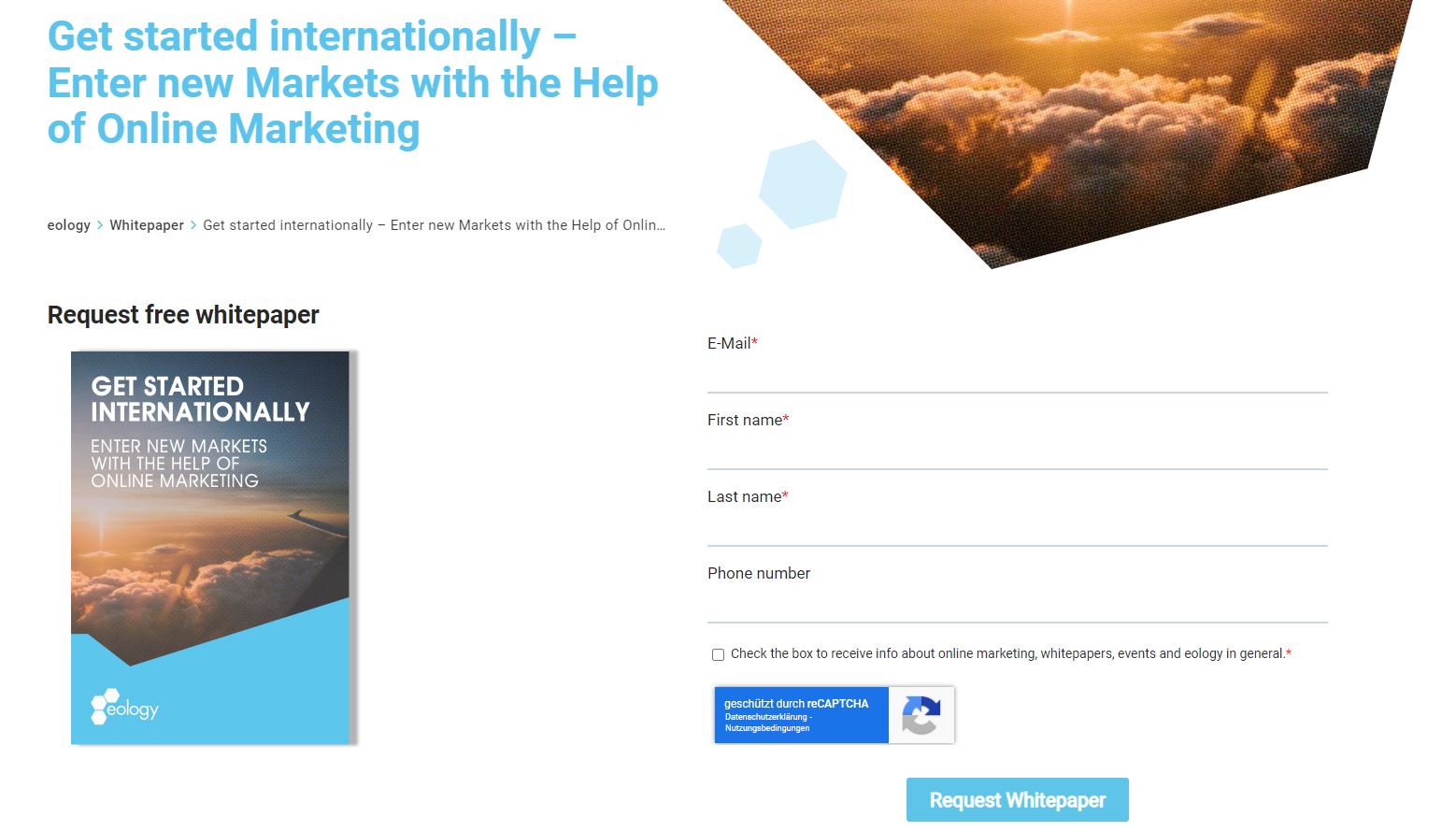An external link is a reference to websites outside your own domain and an important ranking factor. What you have to consider when using such links, you can find out here! ... Continue reading


A landing page is a website whose visitors come from search engines, social networks or other websites. The goal of a landing page is to convert website visitors into customers. Landing pages are good for lead generation because they allow businesses to gather information about potential buyers. Landing pages work great when they include opt-in forms that allow visitors to sign up for free offers, subscribe to newsletters, or download white papers, for example.
The term “landing page” was coined by Neil Patel when he wrote his book, The Ultimate Guide To SEO. He used the term to describe web pages designed specifically for search engines, not just websites. Landing pages are also often referred to as lead capture forms, conversion funnels, squeeze pages or sales pages. In addition, they are also known as conversion optimization pages or CPA (cost per action).
Here are some valuable tips on how to approach your landing page building or optimization:
1) Be aware of what you want to achieve with your landing page. Without a clear definition of the goal or the need group, you cannot create an effective landing page for your advertising campaign.
2) Use an attractive headline. The first thing visitors see should grab their attention. Make sure the headline contains keywords related to your business.
3) Include a clear call to action (CTA). Your CTA should clearly state what action the visitor needs to take. For example, if you’re trying to get someone to sign up for a newsletter, make sure your CTA is “sign up.”
4) Create a meaningful introductory paragraph. Visitors shouldn’t leave your site without reading at least a few sentences. Keep it short and add bullet points. These break up long paragraphs into smaller sections.
5) Write unique content. People don’t like reading the same thing over and over.
6) Include relevant links. Links encourage readers to click on them. You can use internal links to point to other parts of your website or external links to direct readers to another website.
7) Include a video or image. Videos and images catch the eye of site visitors. They also add personality to your content.
8) Optimize your title tags and meta descriptions. These two elements appear above and below your posts in search results. They tell Google and other search engines what each post is about.
9) Make sure your website is mobile-friendly. Mobile users spend more time browsing websites. So make sure they can easily find what they are looking for.
10) Think of all the important information. Users shouldn’t have to search long for contact information, privacy policy, and terms and conditions.

You can either create your own landing page or use a website builder like Wix or Squarespace. There are a lot of templates there, which you can customize to your needs. With these tools you can design pages quickly and easily. It’s even possible to add eCommerce features like shopping carts and payment gateways.
In general, you should orient yourself on a holistic landing page. This takes a holistic approach to a particular topic and offers the user an overview of the topic, the main information and additional subtopics. In this case, your reader can get a complete picture of the subject matter. (e.g. features, benefits, specifications, testimonials, customer reviews, etc.).
There are dynamic and static landing pages. Static landing pages remain unchanged throughout the process. Dynamic landing pages change their content to adapt to the needs of visitors and are therefore often much more effective than static pages. This increases the chances of a high conversion rate.
Three basic types of landing pages can still be distinguished:
1) service/product landing page – This type of landing page is the most common. These are pages where you sell products or services. They can include images, videos, testimonials, reviews and more.
2) free offer landing page – This type of landing page is similar to a service/product landing page. However, instead of selling something, freebies are given away through it. Examples of freebies include free reports, free samples, free guides, free software, etc.
3) lead capture form landing page – This type of landing page is very similar to a service/product landing page, but the difference is that the page aims to collect email addresses and phone numbers instead of selling products.
A landing page is useful if you want to collect information from your visitors about what they like, who they are and how they found out about your product or service. This way you can track where your website traffic comes from and optimize the conversion rate.
A good landing page is essential for any business that wants to be successful online. First impressions count, especially when it comes to search engines like Google. If you want to rank higher in Google search, you need to create high-quality pages that entice visitors to click through to your website.
Yes, landing page SEO is a great way to improve your website’s organic rankings. By creating engaging content on your landing pages, you help increase the overall authority of your website.
To optimize your landing pages for search engine optimization, you should focus on making them as user-friendly as possible. You also need to make sure they are attractively designed and easy to navigate. A good landing page should be short and include all the factors mentioned above.
You want to learn more about exciting topics?